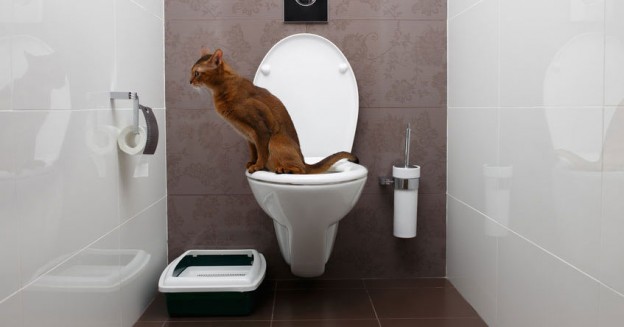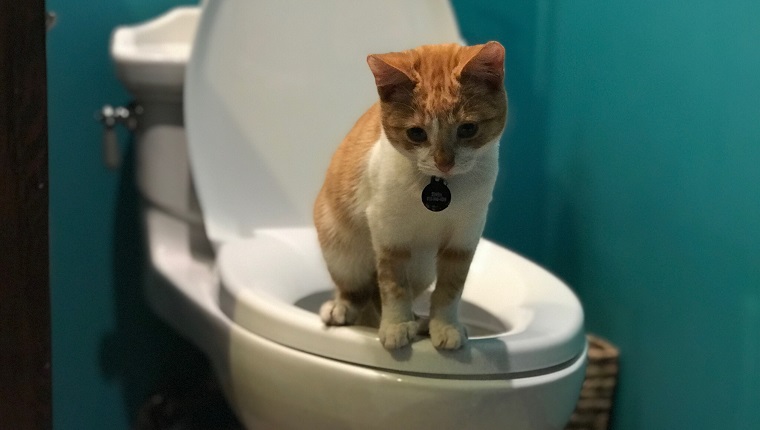Don't Flush Cat Poop Down Your Toilet - Preserve Your House's Pipe System
Don't Flush Cat Poop Down Your Toilet - Preserve Your House's Pipe System
Blog Article
How do you feel in regards to How to Dispose of Cat Poop and Litter Without Plastic Bags?

Intro
As feline proprietors, it's necessary to be mindful of how we get rid of our feline close friends' waste. While it might appear practical to flush feline poop down the commode, this practice can have detrimental consequences for both the setting and human health.
Alternatives to Flushing
Thankfully, there are much safer and more responsible methods to get rid of pet cat poop. Take into consideration the adhering to alternatives:
1. Scoop and Dispose in Trash
The most typical approach of taking care of pet cat poop is to scoop it right into a biodegradable bag and throw it in the trash. Make certain to use a dedicated trash inside story and throw away the waste immediately.
2. Usage Biodegradable Litter
Go with naturally degradable cat trash made from products such as corn or wheat. These trashes are environmentally friendly and can be securely dealt with in the garbage.
3. Hide in the Yard
If you have a yard, consider burying feline waste in a designated location away from vegetable yards and water resources. Make certain to dig deep enough to prevent contamination of groundwater.
4. Set Up a Pet Waste Disposal System
Purchase an animal garbage disposal system particularly designed for cat waste. These systems utilize enzymes to break down the waste, reducing odor and environmental impact.
Health Risks
In addition to ecological issues, purging pet cat waste can additionally pose health dangers to humans. Pet cat feces might contain Toxoplasma gondii, a bloodsucker that can trigger toxoplasmosis-- a possibly serious health problem, especially for pregnant females and people with damaged immune systems.
Ecological Impact
Flushing feline poop presents hazardous pathogens and parasites into the supply of water, positioning a substantial threat to marine ecological communities. These contaminants can adversely influence marine life and compromise water top quality.
Final thought
Responsible pet possession prolongs beyond giving food and sanctuary-- it also involves proper waste administration. By avoiding flushing feline poop down the bathroom and selecting different disposal methods, we can reduce our ecological footprint and secure human wellness.
Why Can’t I Flush Cat Poop?
It Spreads a Parasite
Cats are frequently infected with a parasite called toxoplasma gondii. The parasite causes an infection called toxoplasmosis. It is usually harmless to cats. The parasite only uses cat poop as a host for its eggs. Otherwise, the cat’s immune system usually keeps the infection at low enough levels to maintain its own health. But it does not stop the develop of eggs. These eggs are tiny and surprisingly tough. They may survive for a year before they begin to grow. But that’s the problem.
Our wastewater system is not designed to deal with toxoplasmosis eggs. Instead, most eggs will flush from your toilet into sewers and wastewater management plants. After the sewage is treated for many other harmful things in it, it is typically released into local rivers, lakes, or oceans. Here, the toxoplasmosis eggs can find new hosts, including starfish, crabs, otters, and many other wildlife. For many, this is a significant risk to their health. Toxoplasmosis can also end up infecting water sources that are important for agriculture, which means our deer, pigs, and sheep can get infected too.
Is There Risk to Humans?
There can be a risk to human life from flushing cat poop down the toilet. If you do so, the parasites from your cat’s poop can end up in shellfish, game animals, or livestock. If this meat is then served raw or undercooked, the people who eat it can get sick.
In fact, according to the CDC, 40 million people in the United States are infected with toxoplasma gondii. They get it from exposure to infected seafood, or from some kind of cat poop contamination, like drinking from a stream that is contaminated or touching anything that has come into contact with cat poop. That includes just cleaning a cat litter box.
Most people who get infected with these parasites will not develop any symptoms. However, for pregnant women or for those with compromised immune systems, the parasite can cause severe health problems.
How to Handle Cat Poop
The best way to handle cat poop is actually to clean the box more often. The eggs that the parasite sheds will not become active until one to five days after the cat poops. That means that if you clean daily, you’re much less likely to come into direct contact with infectious eggs.
That said, always dispose of cat poop in the garbage and not down the toilet. Wash your hands before and after you clean the litter box, and bring the bag of poop right outside to your garbage bins.
https://trenchlesssolutionsusa.com/why-cant-i-flush-cat-poop/

Do you enjoy more info about Don’t flush cat feces down the toilet? Create a remark down the page. We will be delighted to see your suggestions about this review. Hoping to see you back again later on. Liked our blog entry? Please share it. Help others find it. Thanks for your time invested reading it.
Start Now Report this page